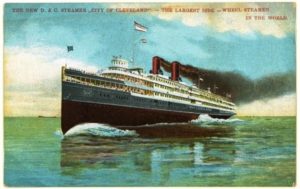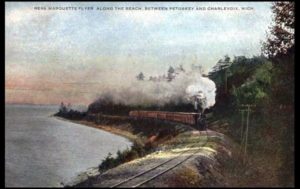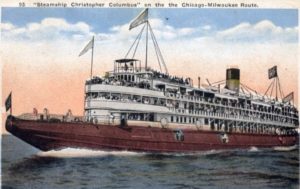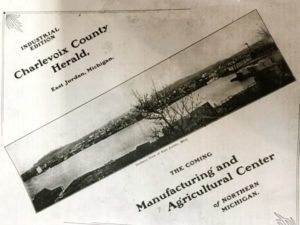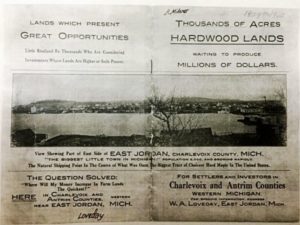Current day Castle Farms sits upon the original site of the Loeb farm, originally established in 1918. We have much appreciation today for the quality masonry masterpiece with its strong stone arches and towering silos. It was built aesthetically to model that of a dairy farm in Normandy, France, but functionally to serve as a modern showcase farm to promote cutting-edge farm equipment.
Albert Loeb, original founder and then-acting president of Sears and Roebuck, was a wise and resourceful man, who could foresee rich opportunities. In much the same way Loeb’s son Ernest would build a dam to lagoon up the creek that crossed his farm, creating a plentiful and well-stocked pond, so did Albert compare the state of the world’s business when he said, “…the higher the dam will rise, and the bigger the reservoir of work and business to keep us going.”
Loeb was listed in Hearst Publications alongside stalwart greats such as those from United States Steel Corporation, Marshall Fields Company and National Bank of America. He was called the “Modern Mail Order Marvel” by Forbes in November 1917, building Sears and Roebuck from “a small concern to $2,500,000 in mail order business per week.”
So it was headline news when Loeb announced that he would be breaking sod on nearly half of the 1600 acres that he had purchased on the picturesque shores of Pine Lake, later renamed Lake Charlevoix. The railway with rail service at two train depots on the Pere Marquette Railway line, helped Charlevoix become known as one of the nation’s finest summer communities. Likewise, Charlevoix was also a popular destination for many Great Lakes passenger liners leaving Chicago each week. So it’s not surprising that Loeb would choose to summer with family in the area. But why open a showcase dairy farm on infertile land riddled with stumps and stones?
Loeb’s campaign was one of education, introducing not just area farmers, but even breeders from around the world to the modern and efficient machinery available through the Sears and Roebuck catalog. He needed a challenge and he needed some good press coverage. Anyone can grow crops and healthy animals where the land is rich and fertile. But only a farmer armed with technologically-advanced Sears and Roebuck equipment could grow healthier and more abundant feed and produce healthier more productive animals. The fact that he was doing it successfully on difficult terrain and infertile soil made that point even more abundantly clear to Albert Loeb’s customers.
He planned to build the farm and then specialize in Holstein Friesian cows, Duroc-Jersey Swine, and Belgian horses. The Holstein Breeder and Dairyman newsletter reported that Loeb traveled north often to familiarize himself with stump land and cut over tracts. They applauded Loeb’s efforts to clear the soil of stumps and stones, the latter used resourcefully in the construction of the farm. They noted the addition of heavy but careful fertilizing to the soil.
Loeb knew that despite the muck, clay, and sand, many crops like root crops and fruit trees did well in the area soil. He had studied the area himself extensively but no doubt was still swayed by the numerous reprints of the Charlevoix-sponsored settler and investor pamphlets that criss-crossed the desks of big-city executives. The Charlevoix County Herald distributed printed pieces entitled Thousands of Acres Waiting to Produce Millions and Lands that Produce Great Opportunities throughout the larger cities during the first two decades of the 20th century in an attempt to spur growth. Inserts in large circulation newspapers, such as The Coming Manufacturing and Agricultural Center of Northern Michigan, promoted not only the agricultural, industrial, and tourist potential of Charlevoix County, but also the area’s growing importance to the state and the country as a whole.
Loeb had done his research. He had established his showcase dairy farm in an area where others had yet to tap its potential. He performed the studies, recorded the findings, and released to the press some unprecedented documentation on record-setting animals. And he accomplished it in just six years from breaking ground. But nearly one hundred years later, there is still much to appreciate in the beautifully restored grounds and buildings. Linda Mueller, the current owner, has also been wise and resourceful in her caretaking activities of the former Loeb property. She has thoughtfully preserved a piece of history so that she might share it with the rest of the world. I’m sure she would readily agree with the words that Albert Loeb left us to live by, “the wise course is to go about doing business cheerfully and confidently…”
Special thanks to Kim Prebble,
Elm Pointe Museum, East Jordan Portside Art & Historical Society

